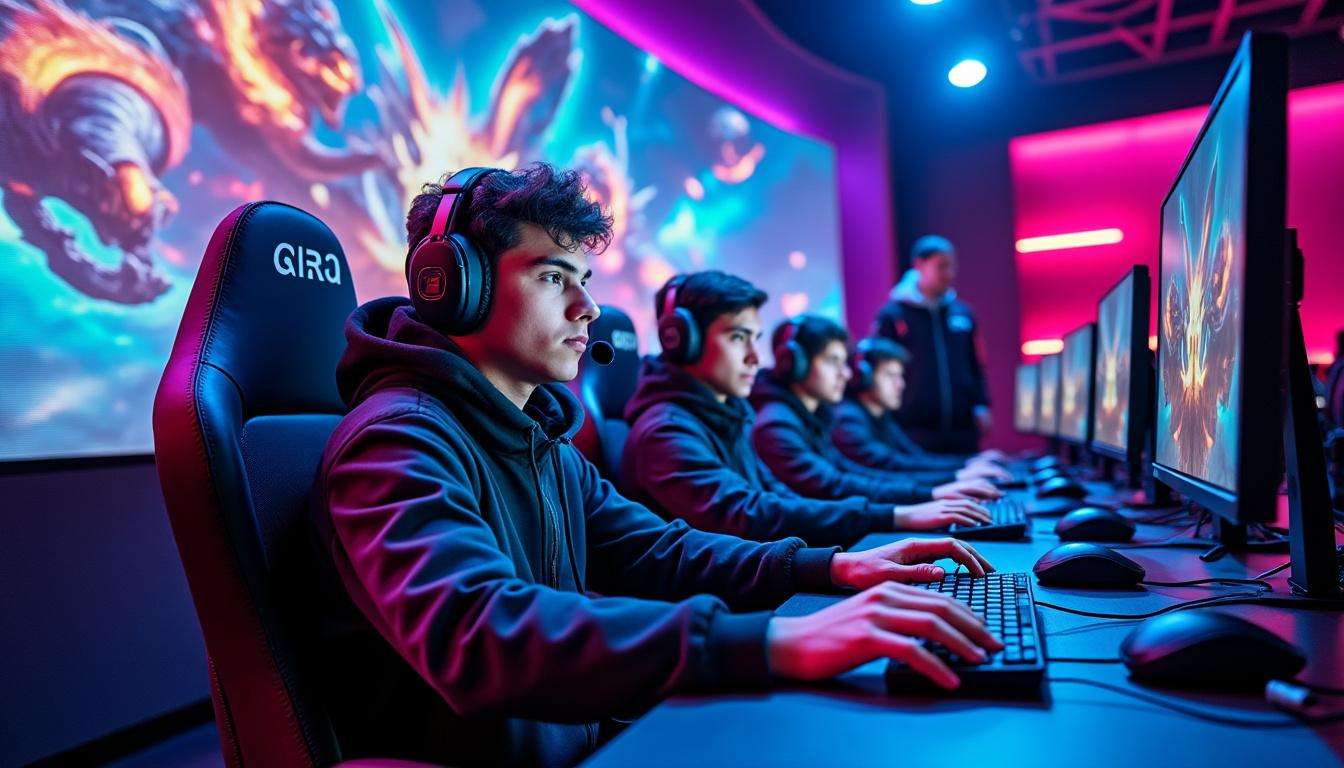RiotGames is surveying the scene on a potential rule change that would allow limited coach-player talk during live League of Legends matches. This article examines the operational, strategic, and competitive angles of permitting LiveCoaching and broader InGameCommunication in pro play, illustrated through the journey of pro mid-laner Alex “Kite” Park, who trains with a top academy to adapt to new dynamics.
Brief: Riot Games is exploring a 2026 pilot to permit one designated coach to communicate during controlled windows. The move would reshape Esports dynamics, affecting MatchStrategy, broadcast workflows, and PlayerDevelopment.
Riot Games Considers Live Coach Communication in League of Legends
Riot’s internal outreach to leagues and teams signals a deliberate evaluation rather than an imminent mandate. The company is collecting feedback to weigh competitive integrity against the potential for richer narratives and tactical depth.
- Possible change: one coach, limited windows, monitored channels.
- Stakeholders: teams, broadcasters, referees, and fans.
- Primary goals: fairness, viewer engagement, and improved training transfer.
Example: when Kite practices with his coach, the team simulates timed communications to train split-second decision-making. That practice model would likely scale to live matches if RiotGames approves standardized windows. Insight: limited voice windows can compress coaching impact into high-leverage moments.
Potential Effects on Match Strategy and Competitive Gaming
Allowing coaches to speak mid-game would alter drafting priorities and in-game tempo. Teams might lean into more dynamic, adaptability-focused strategies rather than pure execute-or-bust drafts.
- Shift in meta: prioritizing champs that benefit from adaptive macro calls.
- New roles: a coach could act as an on-stage commander for rotations.
- Broadcast value: added storylines and tactical explanations for viewers.
Case study: Kite’s team adapted a late-game inversion strategy during scrims when the coach called objective trades; similar mid-match guidance in pro games could swing series outcomes. For deeper team-building tactics, see an overview on how to build a successful gaming team. Insight: Live coaching magnifies the value of mid-series adaptation.
Impact on Player Development and Esports Coaches
Real-time coaching would accelerate skill transfer from practice to stage and reshape day-to-day development plans. Coaches would need new certifications and standardized tooling to ensure consistent application across regions.
- Training changes: simulated pressure windows in scrims.
- Coach evaluation: metrics to measure effective in-game guidance.
- Player growth: faster tactical learning cycle under real match pressure.
Practical example: after Riot hinted at potential changes, discussions from figures like VIT Mac Neo on performance expectations frame how teams may retool standards if coaching becomes live. Insight: sanctioned in-game coaching would make developmental pipelines more outcome-driven and measurable.
Implementation Challenges and Integrity Concerns
Operational hurdles include latency, translation, spectator fairness, and rule enforcement. Riot must balance CompetitiveGaming integrity with broadcast improvements and team autonomy.
- Integrity risks: unfair advantages via off-stage analysis or unauthorized input.
- Logistics: secure, recorded channels and defined communication windows.
- Regional parity: harmonizing rules across LCS, LEC, LCK, and other leagues.
Illustration: a recent internal discussion mirrored in community coverage and roster moves—see how lineup decisions relate to coaching roles in pieces like Thieves bolsters league squad and analysis such as the thrilling world of League of Legends esports. Another angle on champion development is explored in KC Apple’s discussion on stalled development. Insight: robust monitoring and transparent rules are prerequisites to preserve fair competition.
Operational Roadmap and Next Steps for Leagues
Leagues will pilot, iterate, and audit any LiveCoaching trials before full deployment. Success metrics will include competitive balance, viewer retention, and coach impact on series outcomes.
- Pilot design: small sample of matches with narrow windows.
- Audit process: recorded comms and third-party review mechanisms.
- Broadcast integration: explain calls to viewers without spoiling outcomes.
For programs aiming to professionalize teams and coaching, the industry playbook in sources like how to build a successful gaming team offers tactical frameworks. Insight: staged pilots with clear KPIs will determine whether LiveCoaching becomes an enduring feature of competitive League of Legends.

